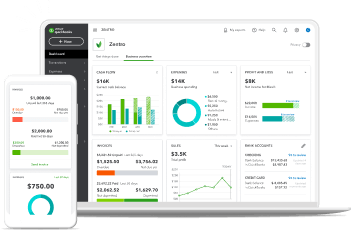Your eCommerce checklist to survive Cyber Week
You’ve been working for months to prepare for Black Friday, and now it’s almost here. For most business owners, this is the busiest time of the year, which means it’s important that you’re ready to handle the season's rush.
Hopefully you’ve already started your holiday marketing plans, but if not, there’s still time to make things even better. That’s why we’ve created a final checklist to help you get the most out of all your hard work.
Optimise your website
Ensure your website is ready for high traffic and conversion. Prominently display trust signals such as product reviews, and streamline the checkout process.
Create a dedicated landing page
Many people may visit your website over the holidays in search of gift ideas. However, consumers’ time and patience are often limited in the hectic weeks before the holiday season. If visitors have to dig through all your offerings to find the perfect gift, they may get overwhelmed and leave your site without buying anything.
You can avoid that situation by encouraging customers to visit a distinct shoppable landing page where they can quickly find what they want and buy.
There are several ways to use these purpose-built landing pages to drive sales during Cyber Week:
- Introduce your newest merchandise
- Highlight best-selling products
- Encourage customers to stock up on favourites
- Create a sense of urgency due to limited quantities
- Offer a special promo code
A shoppable landing page allows even a business without a full eCommerce shop to generate online sales, letting you take full advantage of the holiday buying season no matter what size your business.
Get the most out of your homepage
Your homepage is likely the most viewed page on your website, so it should be formatted for success during the holidays as part of your Cyber Monday marketing plan.
Don’t worry about scaring off customers with heavy-handed promotions on your homepage. During Black Friday and Cyber Week, most customers expect to see a ton of them – so it’s OK to feature any sales you're running. It's also a good idea to add a promotional message announcing any new products customers might actively search for that week.
Audit your inventory
The last thing you want during a busy shopping season is to run out of products. That’s why you should conduct an inventory audit to make sure you’re fully stocked for the holiday rush.
Run through all of the products listed on your site and check to see if you’ve got them in your inventory. If you're an appointment-based business owner, check your calendars to make sure you’ve got the required availability for future customers. Then, make a plan for if an item sells out. Consider offering a gift card in its place, so customers can convert while they're still ready to purchase. And last, tag them to set up an automated follow-up email once the item is back in stock.
Review your shipping and return policies
In such a competitive marketplace, your company’s shipping and return policies can have a huge impact on sales during the holidays. When you’re up against other businesses that may be selling similar products at comparable price points, removing these costs may be a major differentiator.
Having a flexible shipping and return policy shows customers that you're confident about the quality of your products. The policy can also be a major convenience during a time when customers are making a number of purchases and returns. If free shipping for every product seems like an expensive endeavour, consider doing it only for bulk orders to make the option more affordable.
Test drive your shopping experience
Even if you feel like your website is in prime condition for the holiday rush, it doesn’t hurt to double-check. Test drive your site’s shopping experience to make sure it’s fully optimised to service customers.
Start from your homepage and navigate the customer’s shopping experience from start to finish. Are the CTAs clear and actionable? Is there a simple, mobile-friendly checkout that provides multiple ways for customers to pay? Do on-site purchases trigger confirmation and follow-up emails that nurture relationships with customers? Taking a look and asking yourself these questions can help you find areas that need improvement on your website.
Improve cybersecurity measures
It’s essential for retail businesses to have effective cybersecurity measures in place to stay protected against cyberattacks – data breaches, in particular. Strong security protocols such as encryption, multi-factor authentication, and regular system updates, can help to safeguard sensitive customer information and prevent damage to your company – both financial and reputational.
Beyond internal protections, educating customers on safe online shopping practices (such as using secure payment methods) is equally important. This not only helps customers avoid falling victim to scams, but also builds trust in your brand.
Scale up your customer service support
Ahead of Black Friday, make sure your customer support systems are able to handle the surge in enquiries and issues that are likely to arise during this busy shopping period. With increased traffic comes a higher volume of customer questions about product availability, shipping, and returns – you should consider extending support hours and adding extra staff to manage the load.
Integrating chatbots can also help to improve efficiency and reduce wait times. For businesses using platforms like LiveChat or Zendesk, ensure these systems are fully optimised for peak demand.
Reward your customers
When a customer puts something in their shopping cart, you know they’re already interested in your products. This is a great time to offer them a discounted price on a package deal for related items or multiples of the same thing.
Up-selling and cross-selling at checkout is an easy way to increase your revenue during Cyber Week. Another way to boost your holiday sales is to send purchasers a follow-up email featuring more deals on bestsellers or products that go with their original order.
Consider the following incentives:
- Ship purchases for free when the total reaches a certain limit
- Add a deeper discount over a certain dollar level
- Offer a future promo code for referring another customer

















